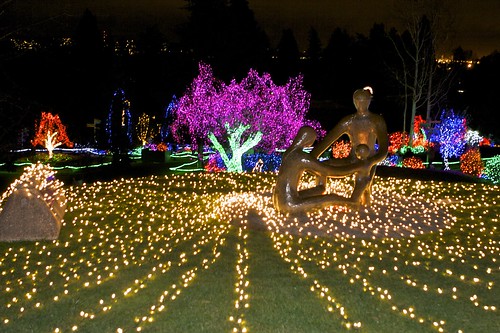Many readers will note that the flash built on their camera seems to do the trick, but the built-in flashes of most cameras don't have the power or versatility of an add-on flash. For example, adding a source of light at the point where you're capturing the image is nice if that's all you can manage, but being able to get the light on the subject from other angles is often more flattering than direct on, which can destroy a sense of realism in the photo by eliminating shadows that provide definition and depth.
That's where off-camera flashes really shine (the puns keep coming). By being able to define the angle of the light off the camera, or even bouncing it off a wall or ceiling, the photographer can obtain a flattering ambient lighting effect.
But simply adding a flash to your camera is often still limiting, particularly outdoors, where you don't have the ability to bounce or diffuse the light off walls and ceilings.
Anyone who has seen a photographer's studio has seen diffusing umbrellas or shiny panels that reflect available light onto the subject. The "mobile photographer" needs a better trick up her sleeve, and that's where diffusers come into play. Recently not only did I invest in a Canon Speedlight 580 EX II, but a Gary Fong flash diffuser as well (actually they were anniversary presents from my dear wife). This is a plastic transparent shroud that acts sort of like a cloud that captures the flash above your camera instead of a harsh straight light illuminating your subject directly.
Saturday night, Christine Carson and I went to the Point Defiance Zoo which has a holiday light show each year. I brought along my tripod and my flash gear to practice my technique.
Whereas I used to avoid the built-in flash of my camera since it destroyed the natural ambiance of the scene, the external flash with diffuser seems to soften the harsh effect of the flash.

Diffused flash.
As a photographer, being at the mercy of the available light will affect your options. Some will prefer the naturally lit scene that doesn't light up the grass so much, but clearly if you wanted to illuminate your subject a little better, and your only choice was the harsh direct illumination from your on-camera flash, a diffuser does a great job in providing a softer, haloed lighting effect that balances proper exposure of your subject with the softness that the scene requires.
